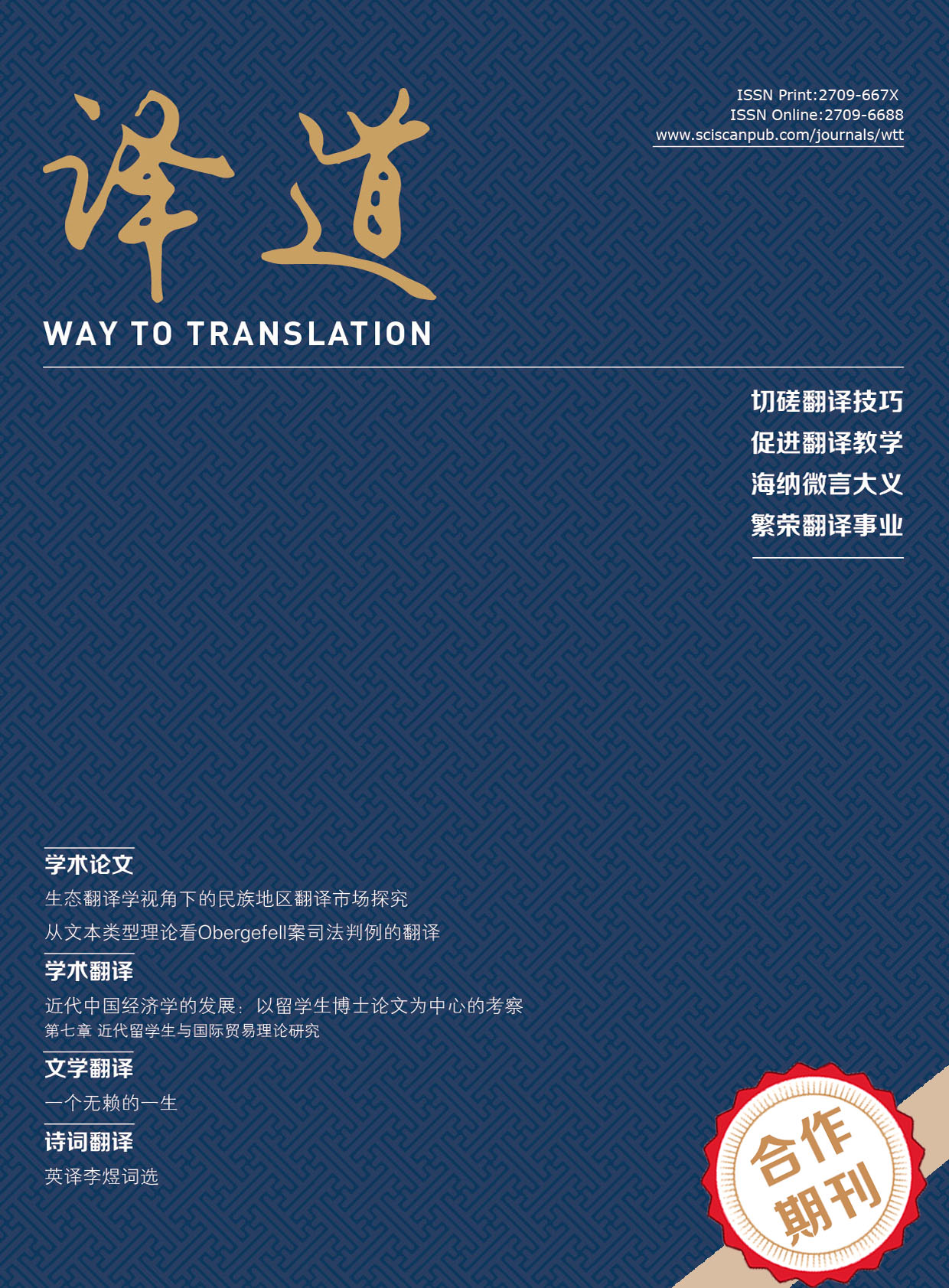Way to Translation
ISSN Print: 2709-667X
ISSN Online: 2709-6688
Contact Editorial Office
Subscribe to the latest published information from SCISCAN
诗歌叠音词的法译研究 ——以《诗经》的两个译本为例
A Study of Poetry Translation Strategies —Taking Two Versions of Book of Poetry as an Example
- Authors: 李星雨
-
Information:
中南财经政法大学外国语学院,武汉
-
Keywords:
Reduplicative words; Shi Jing; French translation; Séraphin Couvreur; Xu Yuanchong; Functional Equivalence叠音词; 诗经; 法译; 顾赛芬; 许渊冲; 功能对等
- Abstract: As one of the earliest collections of Chinese poetry, the Shi Jing has a profound influence on Chinese literature, reproducing the life of the people and society of the Zhou Dynasty in a combination of lyricism and realism. The reduplicative words in the poems greatly enhance their artistic expression and power of communication in terms of structure, rhythm and imagery. Therefore, the translation of reduplicative words cannot be neglected, and the meaning of the original text and its aesthetic and emotional connotation to the greatest extent are important and difficult for the translation. Based on Eugene A. Nida’s Functional Equivalence theory, this paper classifies the reduplicative words into adjective reduplicative, verb reduplicative and onomatopoeic reduplicative according to their lexical nature, and compares and analyzes the translations by Séraphin Couvreur and Xu Yuanchong to explore the translation strategies and sort out the considerations in the process of French translation. 《诗经》作为中国最早的一部诗歌总集,对中国文学有着深远的影响,以抒情和写实相结合的方式再现了周代的民众生活和社会面貌。其中叠音词的频繁出现在结构、节奏和意象塑造上极大地增强了诗歌的艺术表现力和传达力。因此,在《诗经》的法译过程中,叠音词的翻译不可忽视,其译文能否最大限度地还原原文含义以及美感和情感内涵成为了翻译的难点。本文以奈达的功能对等理论为基础,依据词性将叠音词分为形容词叠音词、动词叠音词和拟声叠音词,并将顾赛芬和许渊冲各自的《诗经》译本进行对比分析,探讨诗歌中叠音词的翻译策略并梳理出法译过程中的注意事项。
- DOI: https://doi.org/10.35534/wtt.0102005
- Cite: -
















